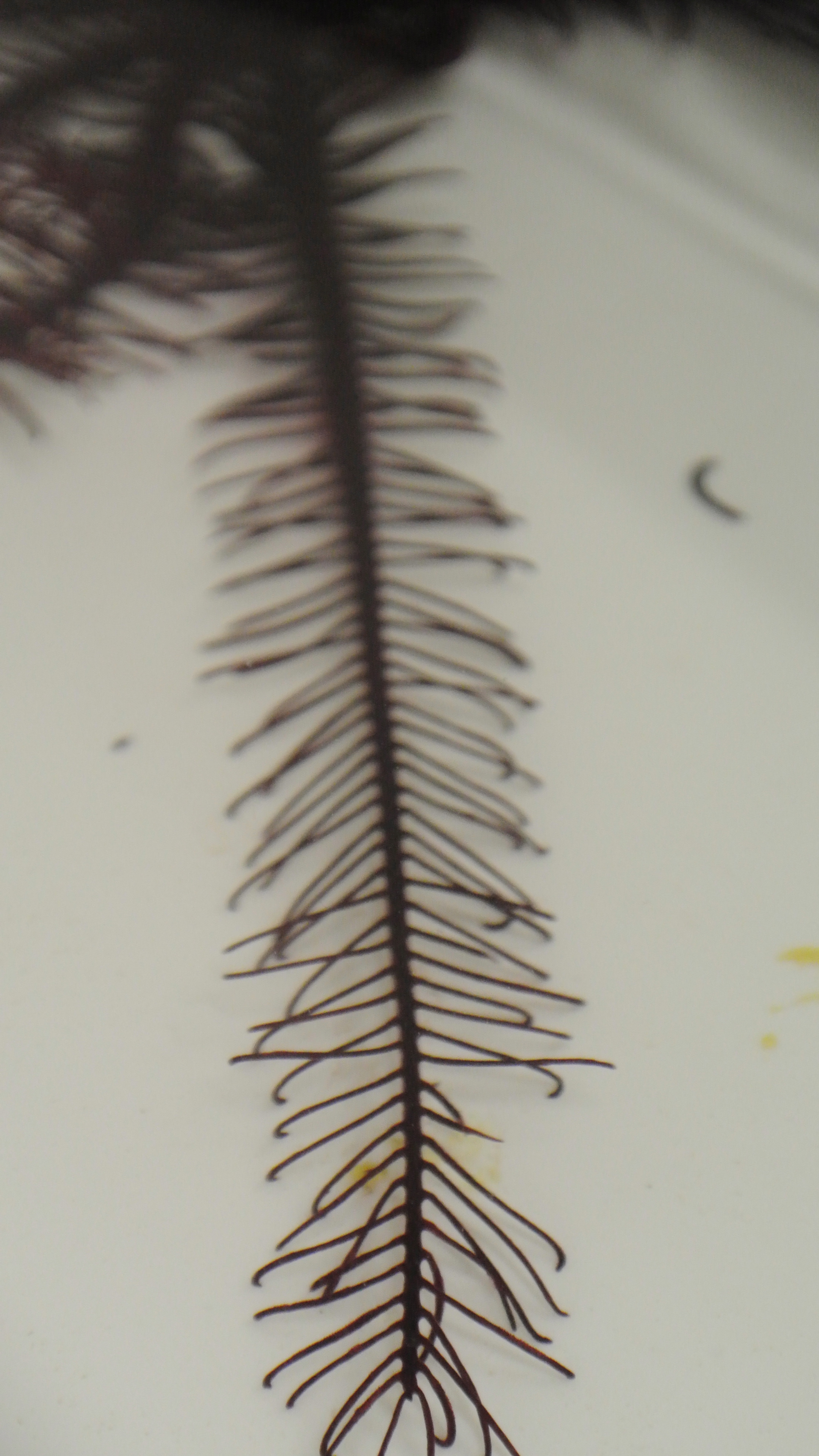Conservation & Threats
Threats
Fortunately at present crinoids have no major threats causing a decline in this class. The only anthropogenic impacts that can be linked to crinoids is increased stress levels from over handling by divers and tourist. This was evident when Comanthus specimens were handled and as a result of handling would disassociate from their legs. Some specimens lost almost 90% of it legs (fig.1). The dropping of legs are a defense mechanism, but its the proportion of legs they drop that cause unnecessary stress.

Figure 1: Last remaining whole arm of a crinoid specimen.
Another threat faced by crinoids is the starvation of individuals caught for the live aquarium trade (Reefed, NA; Synderman, NA; Wild Facts, NA). There is currently no real human need or use for crinoids. However, if use is found the threats to this species may increase.
Conservation Status
Comanthus gisleni has not been assessed on the IUCN Red List and isn't at present in the Catalogue of Life. This makes it difficult to distinguish if this species is under any major threats. The current scientific literature makes no reference to potential threats for this species or the class of Crinoidea.
|